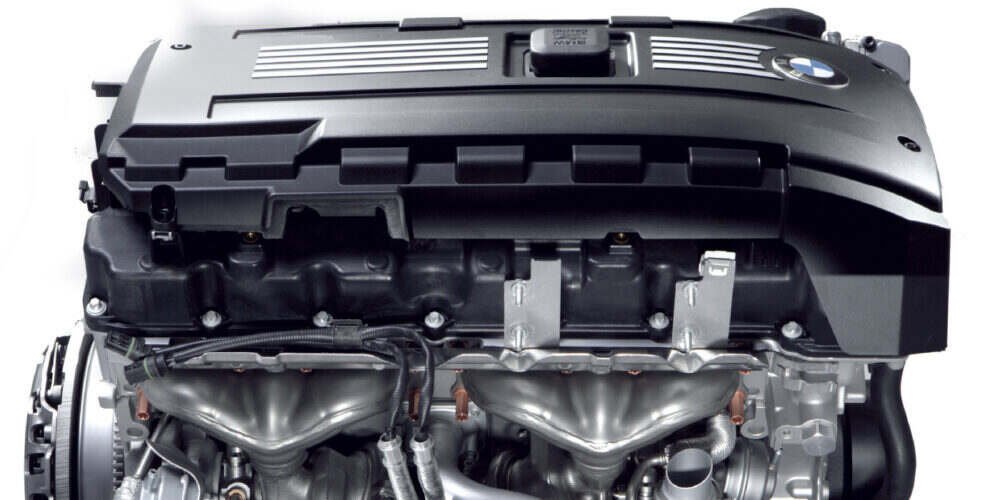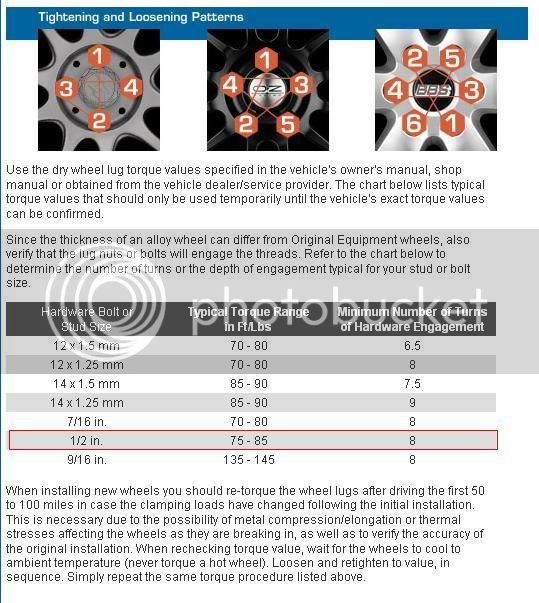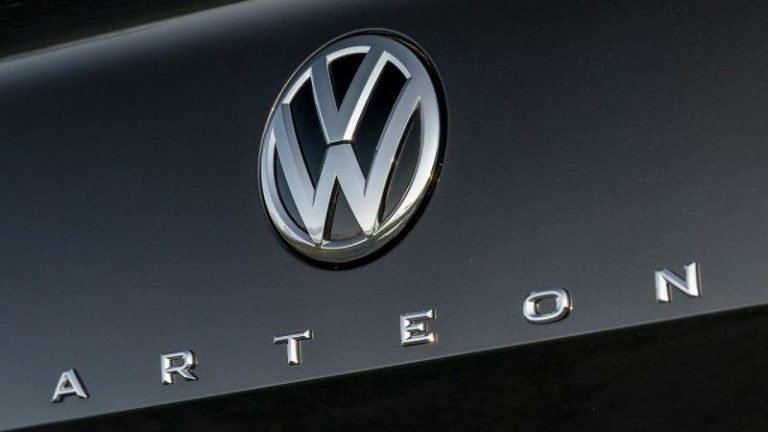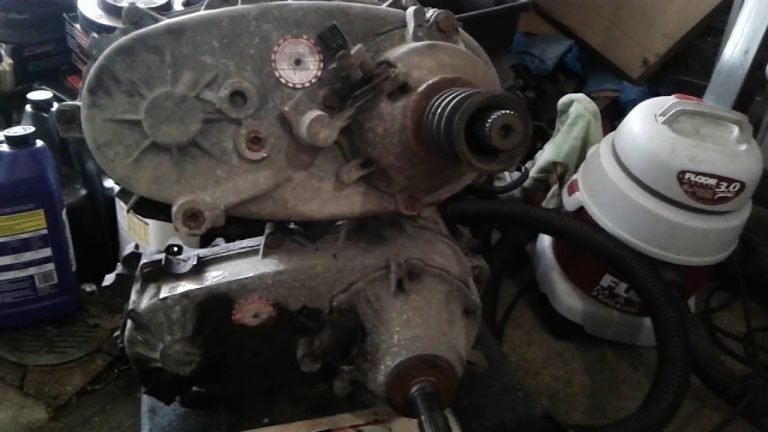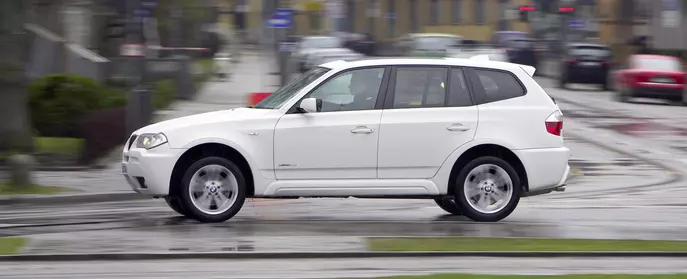Common Problems with BMW 528I: Troubleshooting Tips for Smooth Rides
Common problems with bmw 528i include electrical issues and oil leaks. These issues can lead to various mechanical and electrical failures, affecting the overall performance and reliability of the vehicle.
The bmw 528i is a popular luxury sedan known for its high-performance and elegant design. However, like any automobile, it is not immune to common problems. We will explore some of the most frequently encountered issues with the bmw 528i.
It is essential to be aware of these problems to ensure timely maintenance and avoid any inconvenience or potential dangers on the road. From electrical malfunctions to oil leaks, we will delve into the root causes of these problems and provide insights on how to address them effectively. Read on to discover the common problems faced by bmw 528i owners and find solutions to keep your vehicle running smoothly.

Credit: www.cnet.com
Engine Issues
The bmw 528i is a luxury sedan that offers a powerful engine and a smooth ride. However, like any vehicle, it may experience some common engine issues. In this section, we will discuss three common problems that bmw 528i owners may encounter: engine misfires, oil leaks, and overheating.
Read on to understand the causes, troubleshooting tips, and solutions for these engine problems.
Engine Misfires: Causes And Troubleshooting Tips
Engine misfires can be a frustrating issue to deal with, as it can result in a rough running engine, loss of power, and decreased fuel efficiency. Here are some common causes of engine misfires in the bmw 528i and some troubleshooting tips to address them:
- Ignition system problems: Faulty spark plugs or ignition coils can lead to engine misfires. It’s important to regularly inspect and replace these components as per the manufacturer’s recommendations.
- Fuel system issues: A clogged fuel injector or a malfunctioning fuel pump can disrupt the fuel flow, causing engine misfires. Cleaning or replacing the fuel injectors and ensuring proper fuel pressure can help resolve this problem.
- Vacuum leaks: Unmetered air entering the engine can cause a lean fuel mixture and result in misfires. Inspecting and repairing any vacuum leaks can help improve the engine’s performance.
- Electrical problems: A faulty sensor or wiring issue can also lead to misfires. Conducting a thorough electrical system check and addressing any identified issues can eliminate misfires.
Remember, if you’re unsure about troubleshooting or the extent of the problem, it’s always best to consult with a qualified mechanic.
Oil Leaks: How To Identify And Fix Them
Oil leaks are another common issue that bmw 528i owners may come across. Identifying and addressing oil leaks promptly is crucial to prevent major engine damage. Here’s how you can identify and fix oil leaks:
- Visual inspection: Regularly check the engine bay and the underside of your vehicle for any signs of oil leaks. Look for oil spots or puddles, especially under the car when it’s parked.
- Oil filter and drain plug: Loose or damaged oil filter or drain plug can cause oil leaks. Ensure these components are properly installed and tightened during oil changes.
- Gaskets and seals: Worn out gaskets or seals, such as the valve cover gasket or oil pan gasket, can lead to oil leaks. Replacing these components can resolve the issue.
- Oil pressure switch: A faulty oil pressure switch may cause oil leaks. If you suspect the switch to be the culprit, it’s advisable to have it inspected and replaced if needed.
Regular maintenance and inspections can help detect oil leaks early on, preventing any potential engine damage.
Overheating: Common Causes And Solutions
Overheating is a serious problem that can cause significant engine damage if not addressed promptly. Here are some common causes of overheating in the bmw 528i and potential solutions:
- Cooling system issues: Low coolant level, a faulty radiator fan, or a malfunctioning thermostat can contribute to overheating. Ensure the coolant level is adequate, inspect the radiator fan for proper operation, and consider replacing a faulty thermostat.
- Water pump failure: A failing water pump can lead to inadequate coolant circulation, resulting in overheating. If you notice coolant leakage near the water pump or any signs of a malfunction, it’s crucial to replace the water pump promptly.
- Clogged radiator: A clogged radiator can restrict airflow and result in overheating. Regularly flush and clean the radiator to prevent any blockages.
- Faulty temperature sensor: A malfunctioning temperature sensor can provide inaccurate readings, leading to overheating. Consider having it inspected and replaced if necessary.
It’s important to address overheating issues immediately to avoid severe engine damage. If your bmw 528i consistently overheats, it’s recommended to seek professional assistance to diagnose and rectify the problem.
By understanding these common engine issues with the bmw 528i and their causes, troubleshooting tips, and solutions, you can ensure a reliable and enjoyable driving experience. Regular maintenance and addressing any problems promptly will help keep your bmw 528i running smoothly for years to come.
Electrical Problems
If you own a bmw 528i, you may have encountered some electrical problems. The complex electrical system in these vehicles can sometimes be prone to issues. In this section, we will discuss some common problems with the electrical components of the bmw 528i and provide troubleshooting tips to help you resolve these issues.
Battery Issues: Recognizing Signs Of A Failing Battery
- Dim or flickering headlights: If you notice that your headlights are dimming or flickering, it could be a sign of a failing battery. The battery may not be supplying enough power to the headlights, resulting in this issue.
- Slow or hesitant engine start: If your bmw 528i takes longer than usual to start or if you experience a hesitant engine start, it may indicate a problem with the battery. As the battery loses its charge, it may struggle to provide enough power to start the engine smoothly.
- Frequent jump-starts required: If you find yourself frequently needing to jump-start your bmw 528i, it is a clear indication that your battery is not holding a charge as it should. This could be due to a variety of reasons, such as an aging battery or an underlying electrical problem.
Alternator Problems: Troubleshooting Tips And Solutions
- Dead battery while driving: If your bmw 528i’s battery suddenly dies while you are driving, it could be a sign of an alternator problem. The alternator is responsible for charging the battery while the engine is running. If it malfunctions, the battery may not receive enough charge, leading to its depletion while driving.
- Battery warning light illuminated: If you notice the battery warning light on your bmw 528i’s dashboard, it indicates a potential issue with the alternator. The warning light is designed to alert you to a problem with the charging system, which is primarily controlled by the alternator.
- Electrical system malfunctions: Troubleshooting common issues
- Malfunctioning power windows or locks: If the power windows or locks in your bmw 528i are not functioning correctly, it could be due to an electrical system malfunction. This may be caused by a faulty wiring connection, blown fuses, or a malfunctioning control module.
- Dashboard instrument cluster issues: If the instruments on your dashboard, such as the speedometer or fuel gauge, start behaving erratically or stop working altogether, it can be a result of an electrical system malfunction. This may require inspecting the wiring or replacing faulty components to resolve the issue.
- Erratic lighting behavior: If you notice that the headlights, taillights, or interior lights in your bmw 528i are behaving erratically, such as randomly dimming or flickering, it indicates an electrical system problem. This could be caused by faulty wiring connections, a malfunctioning light control module, or a failing battery.
By being aware of these common electrical problems with the bmw 528i, you can better diagnose and resolve any issues you may encounter. Of course, if you’re unfamiliar with automotive electrical systems or these troubleshooting steps don’t resolve the problems, it’s always recommended to consult a qualified mechanic or bmw dealership for assistance.
Suspension And Steering Troubles
The suspension and steering system of a bmw 528i plays a crucial role in ensuring a smooth and controlled ride. However, like any other car, it can encounter some common problems. In this section, we’ll discuss the key issues related to the suspension and steering of the bmw 528i and provide solutions to help you troubleshoot and resolve these problems.
Suspension Noise: Identifying And Resolving Common Noises
Suspension noise can be quite bothersome for bmw 528i owners. Here are some key points to help you identify and fix common suspension noises:
- Squeaking sound when going over bumps: This noise is often caused by worn-out suspension bushings. Replacing these bushings should eliminate the squeaking sound and restore a quiet ride.
- Clunking or rattling noise: If you hear a clunking or rattling noise when driving on rough roads, it could indicate loose or damaged suspension components. Check the sway bar links, control arms, and strut mounts for any signs of wear or damage. Tightening or replacing these parts as necessary should resolve the issue.
- Grinding noise when turning: A grinding noise when turning can be due to worn-out wheel bearings. If left unchecked, this can lead to further damage and unsafe driving conditions. Replacing the faulty wheel bearings is crucial to resolve this problem.
Uneven Tire Wear: Causes And Solutions
Uneven tire wear is a common issue that can affect the performance and longevity of your bmw 528i’s tires. Here’s what you need to know about its causes and solutions:
- Misalignment: Improper wheel alignment can cause uneven tire wear. Regularly checking and adjusting the wheel alignment can help prevent this issue. If you notice uneven tire wear, it is recommended to have the alignment checked and corrected by a professional.
- Suspension components: Worn-out suspension components can also contribute to uneven tire wear. Inspect the control arms, ball joints, and sway bar links for any signs of wear or damage. Replace any faulty parts to ensure a smooth and even tire wear pattern.
- Tire rotation: Regular tire rotation is essential to promote even wear across all tires. Follow the recommended rotation pattern specified by bmw to extend the lifespan of your tires and maintain optimal performance.
Steering Wheel Vibration: Troubleshooting And Fixing The Issue
Experiencing vibrations through the steering wheel can be quite unsettling while driving your bmw 528i. Here are some steps to troubleshoot and fix the issue:
- Wheel balance: A common cause of steering wheel vibration is unbalanced wheels. Have the wheels balanced by a professional to eliminate this problem. Balancing involves adjusting the weights on the wheel to ensure even weight distribution.
- Tire issues: Uneven tire wear, flat spots, or damaged tires can also lead to steering wheel vibration. Inspect the tires for any signs of damage or wear. If necessary, replace the tires or have them repaired to resolve the issue.
- Suspension components: Worn-out suspension components, such as worn-out bushings or a failing shock absorber, can cause steering wheel vibration. Inspect these components and replace any faulty parts to restore a smooth and vibration-free driving experience.
By understanding these common problems with the bmw 528i’s suspension and steering system, you’ll be better equipped to identify and resolve any issues you may encounter. Regular maintenance and prompt attention to these problems will help ensure a safe and enjoyable driving experience in your bmw 528i.
Transmission Concerns
Transmission Slipping: Causes And Troubleshooting Tips
Transmission slipping is a common issue that bmw 528i owners might encounter. This problem can be frustrating and potentially dangerous, so it’s important to address it as soon as possible. Here are some causes of transmission slipping and troubleshooting tips to help you resolve the issue:
- Low transmission fluid: Insufficient fluid levels can cause the transmission to slip. Check the transmission fluid level and top it up if necessary. If the fluid is low, you might have a leak that needs to be addressed.
- Worn clutch or bands: Over time, the clutch or bands in the transmission can become worn, leading to slipping. In this case, it might be necessary to replace these components to resolve the issue.
- Faulty solenoids: Solenoids control the flow of fluid within the transmission. If they are damaged or malfunctioning, they can cause slipping. Consider having the solenoids checked and replaced if necessary.
- Malfunctioning torque converter: The torque converter transfers power from the engine to the transmission. If it’s not functioning properly, it can cause slipping. A professional inspection and potential replacement of the torque converter might be required.
- Tcm or ecm issues: The transmission control module (tcm) or engine control module (ecm) can sometimes contribute to transmission slipping. These modules control various aspects of the transmission, and if they are not functioning correctly, it can lead to slipping. Consult a professional to diagnose and address any issues with these modules.
- Troubleshooting tips: If you experience transmission slipping, try these troubleshooting tips:
- Restart the vehicle: Sometimes, a simple restart can help reset the transmission system and resolve minor issues.
- Check for error codes: Use an obd-ii scanner to check for any error codes related to the transmission. This can provide valuable information for diagnosis and repair.
- Consult a professional: If the slipping persists or you are unsure about the cause, it’s best to consult a qualified mechanic or transmission specialist. They have the expertise to diagnose and repair complex transmission issues.
Delayed Shifting: How To Address The Issue
Delayed shifting is another common problem that bmw 528i owners might encounter with their transmission. This issue can cause jerky or sluggish gear changes, affecting the overall driving experience. Here are some steps you can take to address delayed shifting:
- Check transmission fluid: Ensure that the transmission fluid level is correct and that it’s in good condition. Dirty or burnt fluid can affect the smooth operation of the transmission. If necessary, replace the fluid and the filter.
- Perform a transmission flush: Over time, debris and contaminants can accumulate in the transmission, leading to delayed shifting. Consider performing a transmission flush to remove these impurities and restore optimal performance.
- Inspect and replace shift solenoids: Shift solenoids control the timing and engagement of gears within the transmission. If these solenoids are faulty or clogged, they can cause delayed shifting. Have them inspected and replaced if necessary.
- Check for software updates: In some cases, delayed shifting can be attributed to outdated transmission control software. Check with your bmw dealer or a qualified mechanic to see if there are any available software updates for your vehicle.
- Seek professional help: If the problem persists or you are uncertain about performing these steps yourself, it’s recommended to seek the assistance of a professional mechanic or transmission specialist. They have the knowledge and tools to diagnose and resolve complex transmission issues.
Transmission Fluid Leaks: Identifying And Fixing Leaks
Transmission fluid leaks can not only lead to low fluid levels but also indicate potential damage or wear within the transmission system. Identifying and fixing these leaks is crucial to maintaining the health of your bmw 528i’s transmission. Here are some steps to help you identify and address transmission fluid leaks:
- Look for fluid puddles: Check the ground underneath your vehicle for any transmission fluid puddles. Leaks can be identified by their red color and distinctive smell. If you notice any fluid, it’s important to identify the source of the leak.
- Inspect transmission seals and gaskets: Common culprits for leaks are faulty seals and gaskets. Inspect these components for signs of damage, wear, or improper installation. If any issues are detected, they should be addressed by replacing the faulty parts.
- Check transmission cooler lines: The transmission cooler lines carry fluid between the transmission and the radiator to cool it down. These lines can develop leaks over time, leading to fluid loss. Inspect the lines for signs of cracks, rust, or leaks. Replace any damaged lines to prevent further fluid loss.
- Examine the transmission pan and drain plug: The transmission pan and drain plug are potential areas for leaks due to loose or damaged seals. Inspect these components and tighten the drain plug if necessary. If the pan gasket is damaged, it should be replaced.
- Seek professional assistance: If you are unable to locate the source of the leak or if the repairs involve complex components, it’s advisable to seek the help of a professional mechanic or transmission specialist. They can accurately diagnose the issue and perform the necessary repairs to fix the leaks.
Remember, addressing transmission concerns promptly can prevent further damage and ensure the longevity of your bmw 528i’s transmission. If you have any doubts or concerns, consult a professional for expert advice and assistance.
Interior And Exterior Problems
Window Regulator Failures: Troubleshooting And Repair Steps
If you own a bmw 528i, you might have encountered issues with the window regulators. These mechanisms are responsible for raising and lowering the windows, and when they fail, it can be a frustrating experience. Here are some common problems and steps to troubleshoot and repair window regulator failures:
- Window not moving: If your window is stuck and won’t move up or down, it’s likely a problem with the regulator. Follow these steps to troubleshoot the issue:
- Check the fuse: Start by inspecting the fuse related to the window regulator. If it’s blown, replace it and test the window again.
- Test the switch: Use a multimeter to check if the window switch is faulty. If there’s no power going to the regulator, the switch may need to be replaced.
- Inspect the wiring: Check the wiring for any damage or loose connections. Repair or replace any damaged wires.
- Replace the regulator: If all else fails, the window regulator may need to be replaced. Consult a professional or follow a diy guide to perform the replacement.
Hvac System Issues: Common Problems And Troubleshooting Tips
Having problems with the hvac system in your bmw 528i can make driving uncomfortable, especially during extreme weather conditions. Here are some common issues you may encounter and troubleshooting tips:
- Weak airflow or no airflow: If you notice the airflow from the vents is weak or there’s no airflow at all, try these troubleshooting steps:
- Check the cabin air filter: A clogged or dirty cabin air filter can restrict airflow. Replace the filter if necessary.
- Inspect the blower motor: The blower motor is responsible for pushing air through the vents. Check for any signs of damage or malfunction. If needed, replace the blower motor.
- Test the resistor pack: The resistor pack controls the blower motor speed. If the fan only works on certain speeds or stops working altogether, the resistor pack may need to be replaced.
- Strange odors: Unpleasant smells coming from the hvac system can be a sign of mold or mildew. To eliminate the odor, try the following:
- Clean the evaporator coil: Mold and mildew can grow on the evaporator coil. Use a cleaner designed for hvac systems to remove any buildup.
- Change the cabin air filter: A dirty cabin air filter can contribute to odor issues. Replace it regularly to prevent unpleasant smells.
Exterior Paint Defects: Dealing With Scratches And Swirl Marks
Maintaining the exterior of your bmw 528i is essential for preserving its appearance and value. However, scratches and swirl marks can detract from the overall look. Here are some tips for dealing with these exterior paint defects:
- Dealing with scratches:
- Assess the depth: Determine the severity of the scratch. If it’s a surface-level scratch, you may be able to fix it yourself. Deeper scratches may require professional assistance.
- Use touch-up paint: For small scratches, touch-up paint matched to your car’s color can be effective. Apply it carefully and follow up with a clear coat for protection.
- Consider professional repair: If the scratch is significant or you’re unsure about fixing it yourself, consult a professional auto body repair shop.
- Removing swirl marks:
- Wash and dry the car: Start by thoroughly washing the car to remove any dirt or debris that can further damage the paint.
- Use a swirl mark remover: There are various swirl mark removers available in the market. Apply the product following the manufacturer’s instructions and use a microfiber cloth to buff out the marks.
- Apply a protective coating: After removing the swirl marks, apply a protective coating like wax or sealant to prevent future damage.
By following these troubleshooting and repair steps, you can address some of the common interior and exterior problems often encountered with a bmw 528i. Regular maintenance and prompt attention to issues will help keep your vehicle in top condition for years to come.
Frequently Asked Questions On Common Problems With Bmw 528I
What Are Common Problems With Bmw 528I?
Some common problems with the bmw 528i include engine oil leaks, electrical issues, and transmission problems.
How Can I Fix An Engine Oil Leak In My Bmw 528I?
To fix an engine oil leak in your bmw 528i, it is recommended to have a professional mechanic inspect the vehicle and determine the source of the leak. They will then be able to perform the necessary repairs, which may involve replacing gaskets or seals.
What Should I Do If My Bmw 528I Experiences Electrical Issues?
If your bmw 528i is experiencing electrical issues, it is best to take it to a qualified mechanic who specializes in bmw repairs. They will have the diagnostic tools and expertise to identify the problem and perform the necessary repairs, which may include replacing faulty wiring or components.
Conclusion
To sum up, it is evident that the bmw 528i is a remarkable vehicle with its fair share of common problems. From the issues with the engine and cooling system to the electrical and interior problems, bmw owners should be aware of these potential challenges.
However, it is important to note that every car has its own set of problems, and the bmw 528i is no exception. Despite these common problems, the 528i is still a highly sought-after vehicle due to its powerful performance, luxurious features, and overall reputation.
Whether it’s the occasional electrical issue or the need for regular maintenance, being prepared and proactive can greatly mitigate the impact of these common problems. In the end, owning a bmw 528i can be a rewarding experience for those who appreciate its unique blend of style, performance, and craftsmanship.

